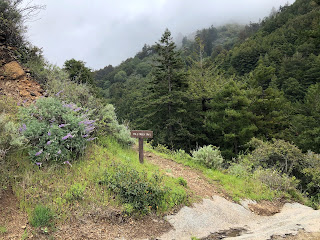8. Fiona Robinson, The Bluest of Blues: Anna Atkins and the First Book of Photographs (2019) (4/29/2020)
 This lovely children's book is about English botanist and photographer Anna Atkins (1799–1871), the only daughter of renowned chemist, mineralogist, and zoologist John George Children. Raising her as a single father, he taught her to be curious, passionate, methodical, and observant. He was also close friends with photography pioneer William Henry Fox Talbot and astronomer John Herschel—who invented the cyanotype—which no doubt influenced her adoption of photography as an artistic and recording medium. She was the first person to assemble a series of photographic illustrations in a book, the self-published Photographs of British Algae: Cyanotype Impressions, in October 1843. She went on to produce two more volumes, as well as books on ferns and flowering plants. Only 17 copies of Algae, in various states of completeness, are known to exist, housed in major museums around the world. In March 2015, Google dedicated one of their doodles to her on the occasion of her 216th birthday.
This lovely children's book is about English botanist and photographer Anna Atkins (1799–1871), the only daughter of renowned chemist, mineralogist, and zoologist John George Children. Raising her as a single father, he taught her to be curious, passionate, methodical, and observant. He was also close friends with photography pioneer William Henry Fox Talbot and astronomer John Herschel—who invented the cyanotype—which no doubt influenced her adoption of photography as an artistic and recording medium. She was the first person to assemble a series of photographic illustrations in a book, the self-published Photographs of British Algae: Cyanotype Impressions, in October 1843. She went on to produce two more volumes, as well as books on ferns and flowering plants. Only 17 copies of Algae, in various states of completeness, are known to exist, housed in major museums around the world. In March 2015, Google dedicated one of their doodles to her on the occasion of her 216th birthday.But back to Robinson's book: it is rendered mostly in blue, with occasional splashes of red, reminiscent of a poppy that, in this telling, she preserved between the leaves of a book and that launched her on her path of observing and recording. The illustrations are montages of pencil drawings, watercolor paintings, vintage fabrics and wallpapers, wood veneers, and photographs, including, of course, cyanotypes that the author made herself. She also includes instructions on how to make your own cyanotypes. It's a rich book, about a fascinating person whom I wouldn't mind traveling back in time to hang out with. Here are a few of the illustrations (as always, click on the images to see them large on black):
 |
| Atkins was also an accomplished scientific illustrator. |
 |
| A page from her Algae book, with hand-lettered caption |
And to keep up the stats from the Covid-19 string of posts:
Monterey County now has 206 confirmed cases—up 58 in the last ten days—and there's been a fifth fatality.











































